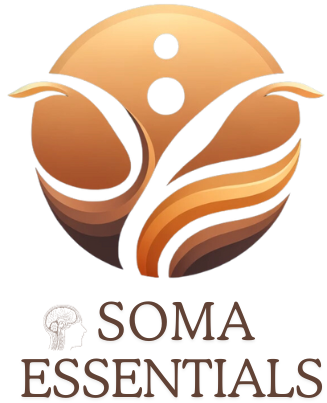Embodied Mindfulness: Understanding the Benefits of Somatic Healing
Embodied mindfulness is a powerful approach to somatic healing that has gained increasing recognition and popularity in recent years. This holistic practice combines the wisdom of traditional mindfulness techniques with the principles of somatic healing, creating a unique and transformative experience. By bringing awareness to the mind-body connection, embodied mindfulness allows individuals to deepen their understanding of themselves and cultivate a sense of inner peace and balance. In this article, we will explore the concept of embodied mindfulness, its benefits, and how it can be incorporated into our daily lives. Join us on this journey towards self-discovery and learn how this practice can help you achieve a state of physical, emotional, and mental well-being.
Embodied mindfulness is a holistic approach to healing that focuses on the mind-body connection. It incorporates principles of somatic movement and therapy, as well as somatic psychology, to promote physical and emotional well-being. This approach recognizes the importance of soma essentials in achieving a healthy mind-body connection.
Soma essentials refer to the basic elements that are necessary for a balanced mind-body connection. These include physical movement, emotional regulation, and self-awareness. Somatic therapy is a form of therapy that uses the body as a gateway to understanding and healing the mind. This can involve techniques such as bodywork, breathing exercises, and mindfulness practices.
In addition to somatic therapy, somatic exercises are also beneficial for improving mind-body connection. These exercises are specifically designed to help individuals tune into their body and become more aware of their physical sensations. Examples of somatic exercises include yoga, tai chi, and qigong, which focus on slow, intentional movements and deep breathing. These practices not only improve physical health but also promote relaxation and reduce stress.
Somatic psychology is another essential aspect of embodied mindfulness. It involves exploring the connection between our thoughts, emotions, and physical sensations to gain a deeper understanding of ourselves. Through this approach, individuals can develop greater body awareness and self-discovery. It is a valuable tool for those seeking soma essentials for a better mind-body connection.
It’s important to note that embodied mindfulness is not a one-size-fits-all approach. Each individual’s journey will be unique, and it’s essential to find what works best for you. Some may prefer a more physical approach, while others may resonate with somatic psychology. The key is to find a combination of practices that support your mind-body connection and overall well-being.
The Power of Somatic Psychology
Embodied mindfulness is based on the principle that our thoughts, emotions, and physical sensations are all interconnected. This approach recognizes the power of somatic psychology in understanding and healing our mind-body connection. Somatic psychology is a branch of psychology that focuses on the body and its role in psychological well-being.
Through somatic psychology, we can uncover the link between our thoughts, emotions, and physical sensations. This connection is vital in understanding how our bodies respond to stress and trauma, and how we can use this knowledge to promote healing.
Somatic psychology techniques, such as body awareness and breathing exercises, can help us become more attuned to our physical sensations and emotions. By paying attention to these sensations, we can gain insight into our thought patterns and emotional responses. This self-awareness can be a powerful tool in managing stress and promoting overall well-being.
The Principles of Somatic Movement
Somatic movement is a key component of embodied mindfulness, as it focuses on the physical aspect of the mind-body connection. This approach emphasizes the importance of being present in one’s body and using movement as a way to release tension, increase awareness, and promote healing.
There are several principles that guide somatic movement, including:
- Body Awareness: This involves paying attention to the sensations and movements of the body in the present moment.
- Breathwork: Incorporating deep and intentional breathing techniques to support movement and release tension.
- Slow and Conscious Movements: Moving slowly and with purpose allows for a deeper connection with the body and its sensations.
- Exploration and Play: Encouraging a sense of curiosity and creativity in movement, rather than strict or repetitive exercises.
By incorporating these principles into somatic movement practices, individuals can improve their mind-body connection and experience greater physical and emotional well-being.
Exploring Somatic Therapy
Embodied mindfulness is a powerful approach to healing that recognizes the interconnectedness of the mind and body. It emphasizes the importance of somatic therapy in promoting physical and emotional well-being.
Somatic therapy is a form of body-based therapy that focuses on the physical sensations and movements of the body as a way to heal emotional and psychological issues. It involves using techniques such as breathing, movement, and touch to release tension and trauma stored in the body.
Through somatic therapy, individuals can become more aware of their body’s sensations and use them as a tool for self-exploration and healing. By connecting with their bodies, they can identify and release emotions and patterns that may be causing distress or hindering personal growth.
This approach to therapy can be especially beneficial for those struggling with chronic pain, trauma, stress, or other physical and emotional issues. By addressing the root causes of these issues and promoting mind-body connection, somatic therapy can help individuals heal from within.
If you are seeking a holistic approach to healing and want to explore the benefits of somatic therapy, embodied mindfulness may be the perfect fit for you. By incorporating somatic therapy principles into your daily life, you can experience greater physical and emotional well-being.
Embodied mindfulness is a powerful tool for improving our mind-body connection and overall well-being. By incorporating somatic therapy, exercises, and psychology into our lives, we can develop a deeper understanding of ourselves and enhance our soma essentials. Remember, the journey to embodied mindfulness is unique for everyone, so be patient and find what works best for you.

